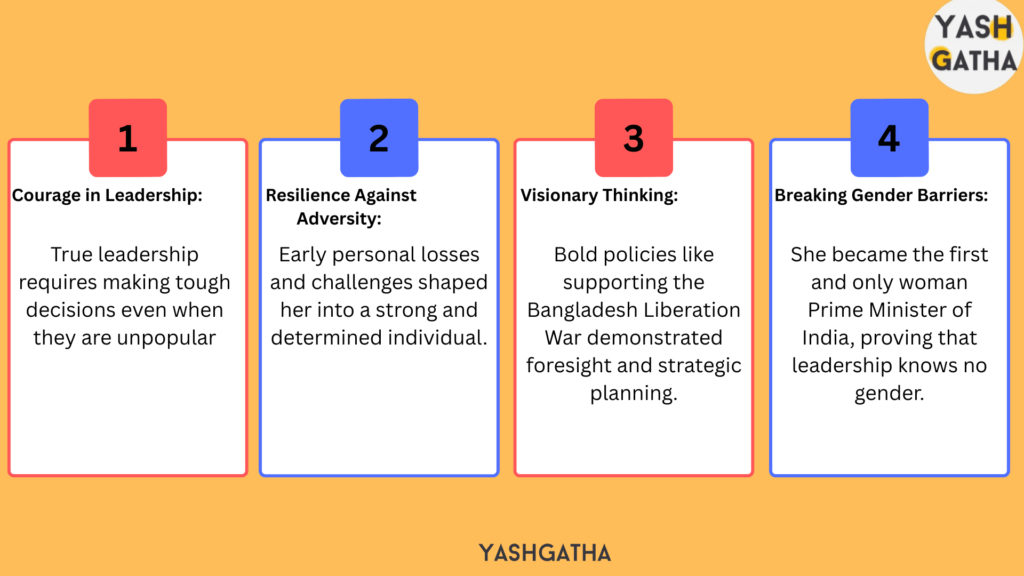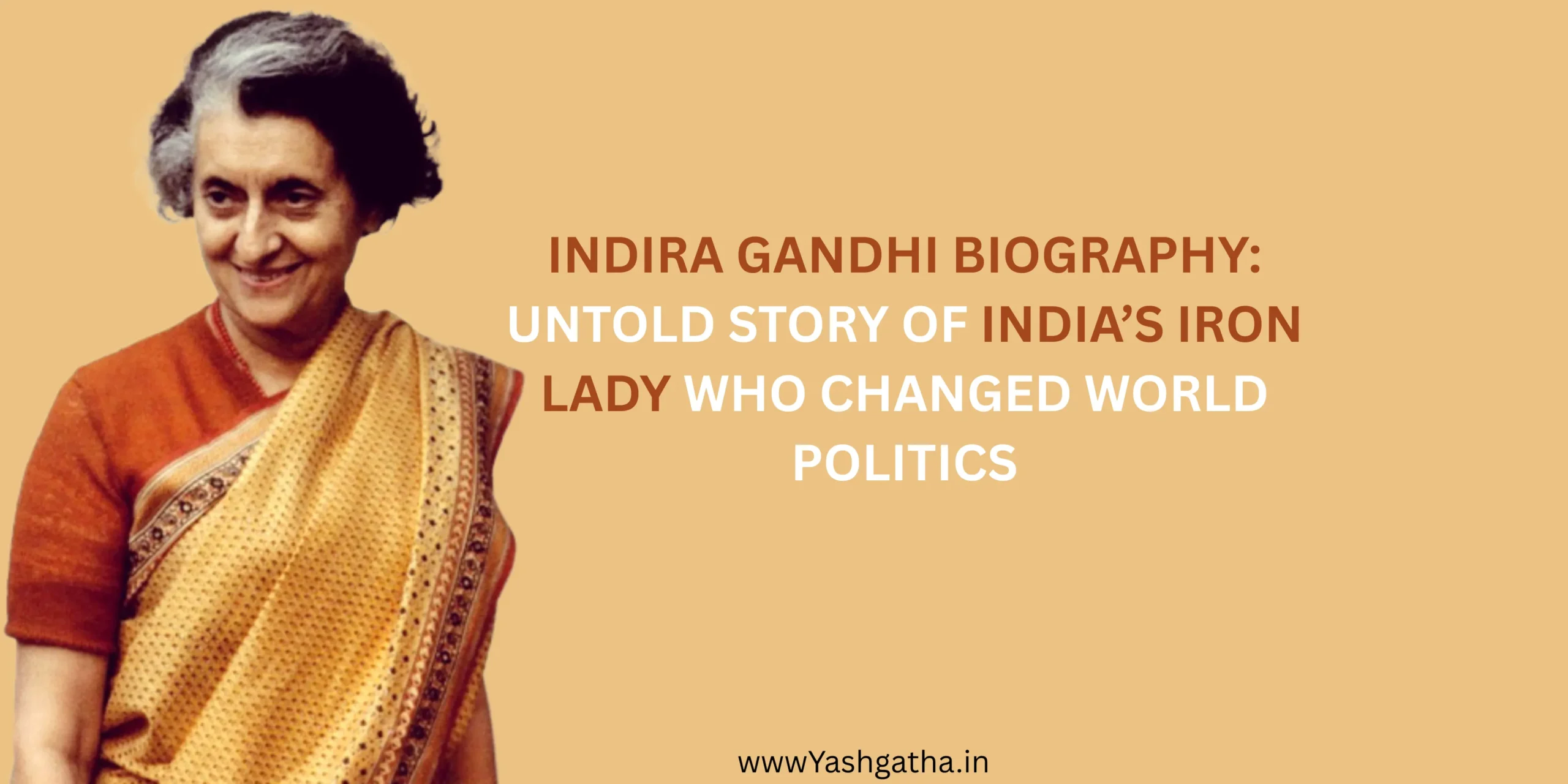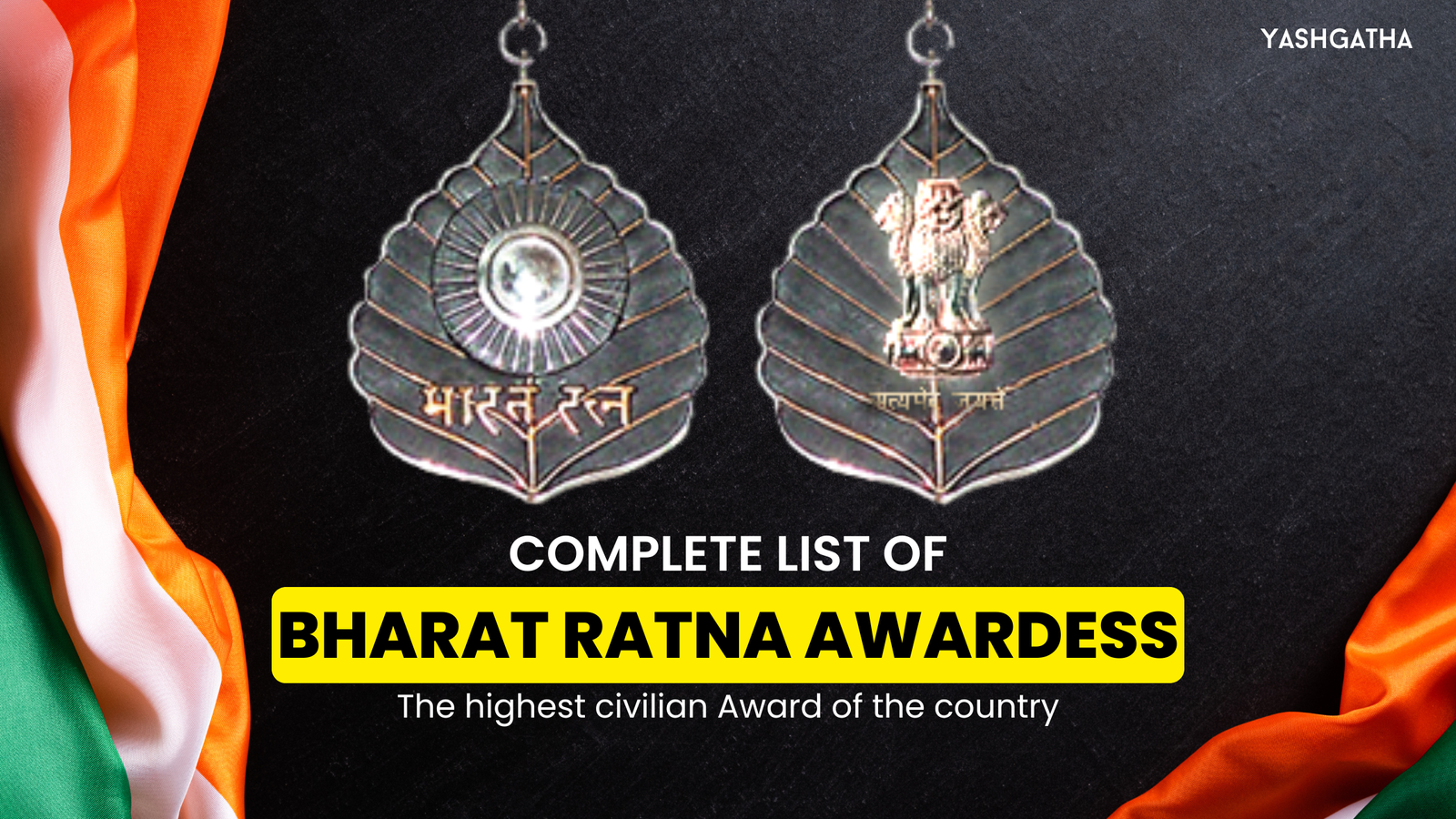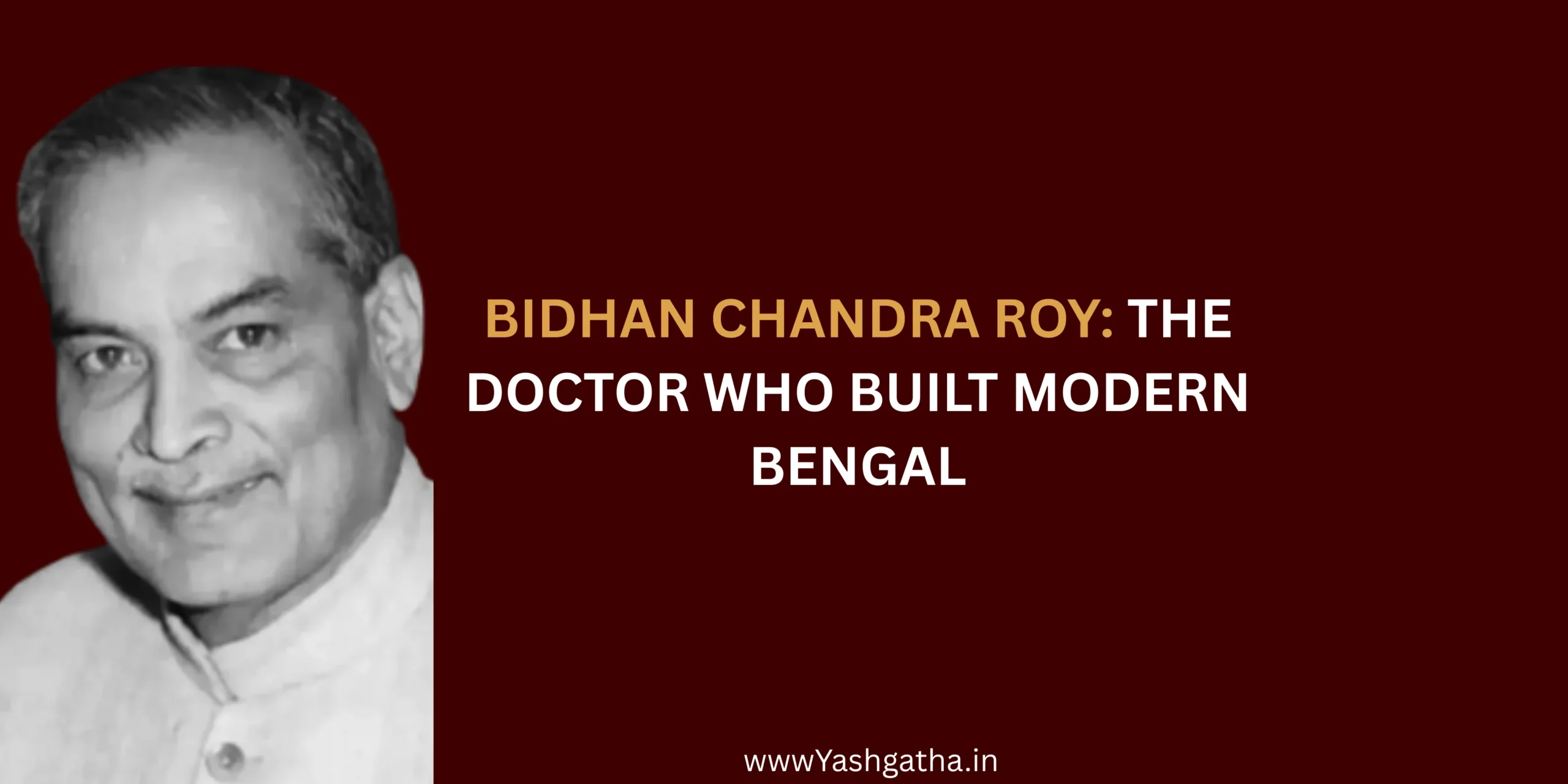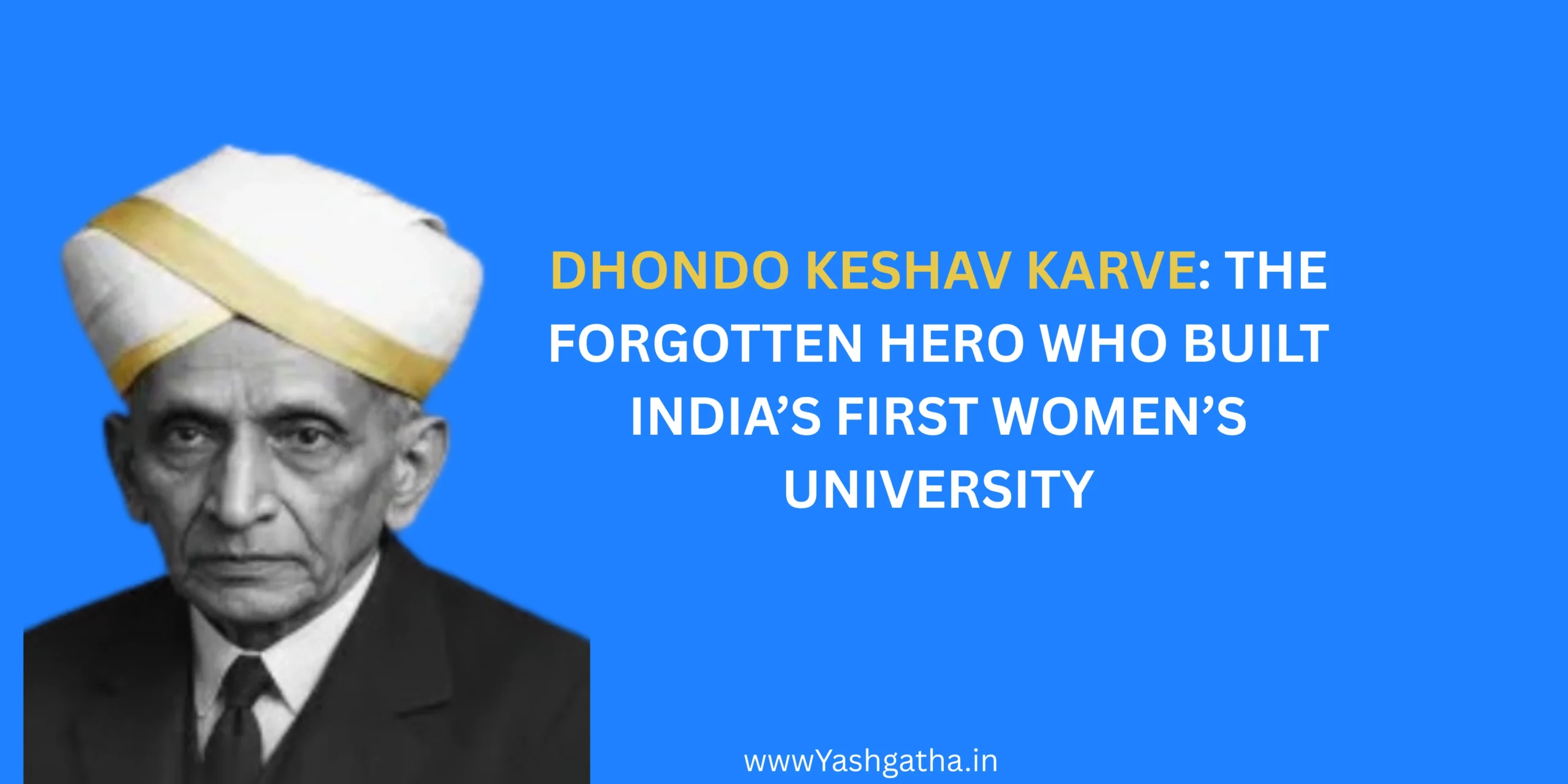Indira Priyadarshini Gandhi, born on 19 November 1917 in Allahabad, Uttar Pradesh, rose to become India’s first and only woman Prime Minister, earning the title of the “Iron Lady of India”; in recognition of her bold leadership during the 1971 Bangladesh Liberation War and her immense contribution to politics and public service, she was honored with the nation’s highest civilian award, the Bharat Ratna in 1971, leaving behind a legacy of resilience, power, and transformation in Indian history.
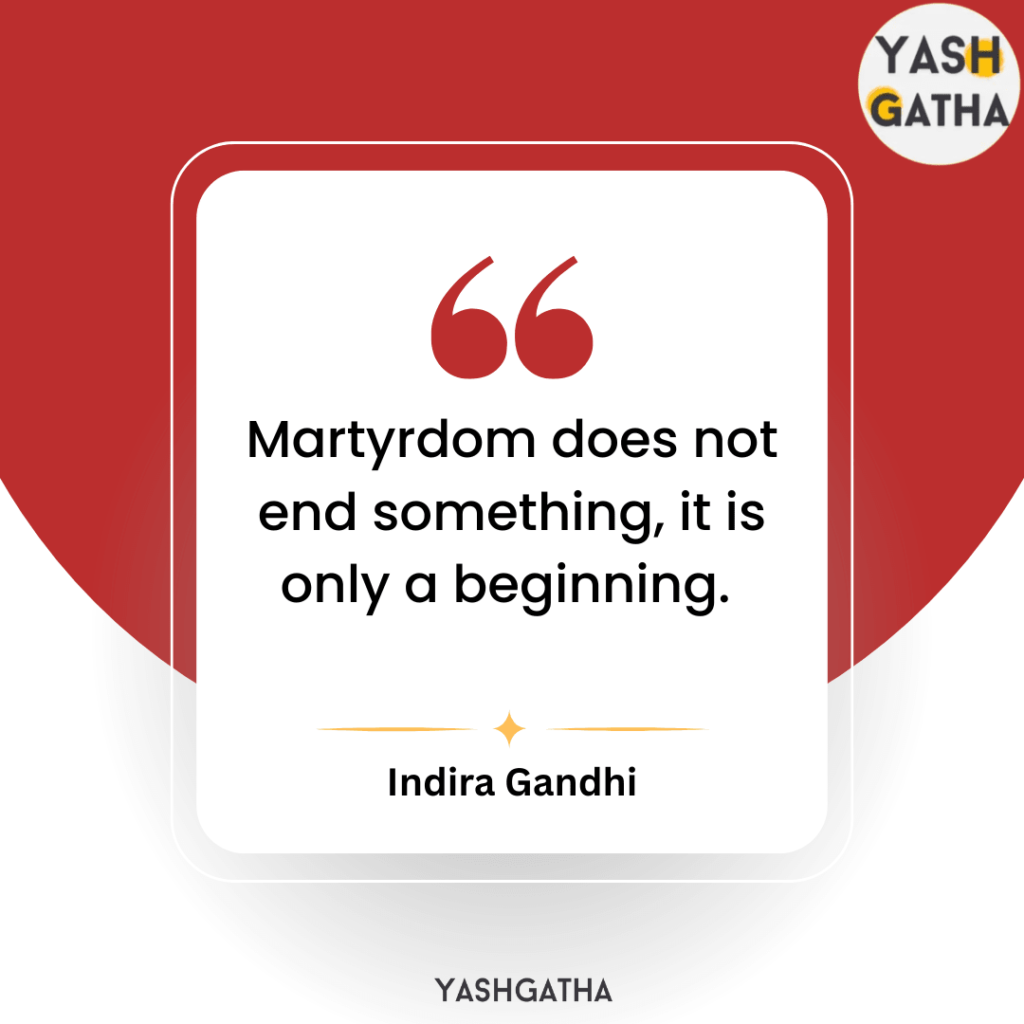
Indira Gandhi, the Iron Lady of India, was the nation’s first and only woman Prime Minister. Born in Allahabad, she rose from personal struggles to become one of the most powerful leaders in modern history. Her bold decisions—from the 1971 Bangladesh Liberation War to receiving the Bharat Ratna award—cemented her legacy as a leader who transformed India’s global image. But behind the power was a story of resilience, controversy, and sacrifice that continues to inspire generations.
Early Life & Challenges :
Indira Priyadarshini Gandhi was born on 19th November 1917 in Allahabad, Uttar Pradesh, into one of India’s most influential political families. She was the only child of Jawaharlal Nehru, who would later become the first Prime Minister of independent India, and Kamala Nehru, a freedom fighter who actively participated in the struggle against British rule.
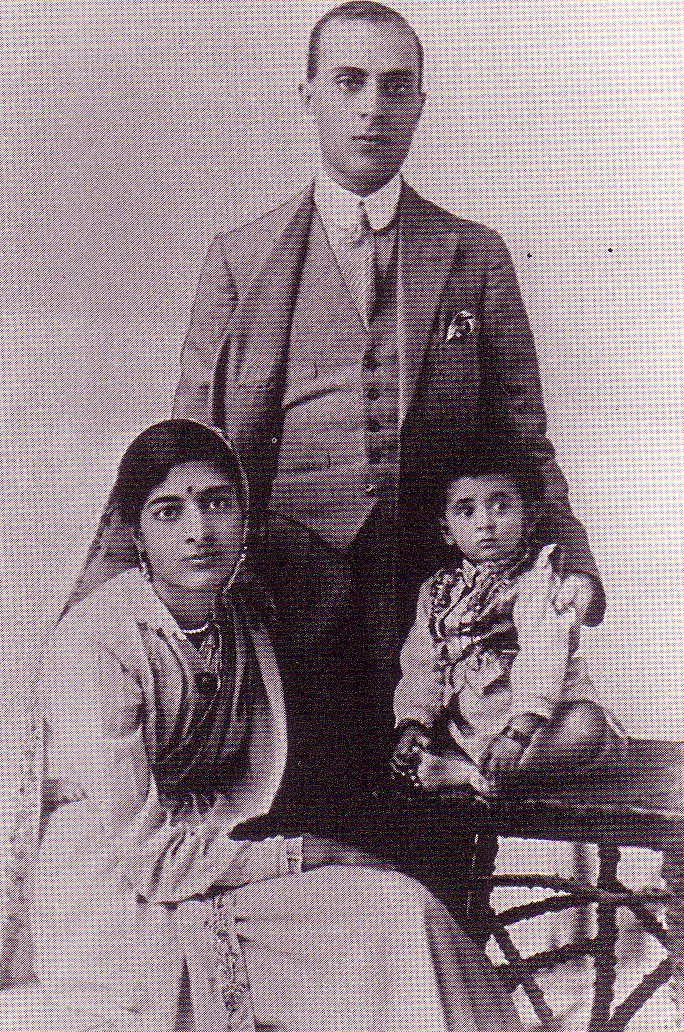
credit:Ilankai Tamil Sangam
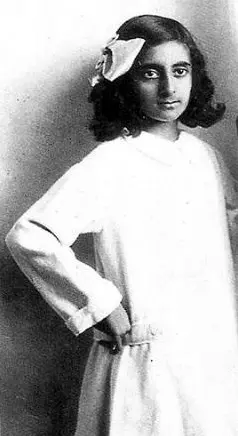
credit:wikipedia
From the very beginning, Indira’s life was deeply connected to the Indian independence movement. Her childhood home was often a meeting place for prominent leaders like Mahatma Gandhi, Motilal Nehru, and Subhas Chandra Bose. This constant exposure to politics shaped her vision and inspired her to serve the nation.
Yet, her early years were far from easy:
- She suffered frequent illnesses, which kept her away from regular schooling and left her feeling isolated.
- The passing of her mother, Kamala Nehru, in 1936 deeply affected her emotionally and forced her to take on responsibilities at a young age.
- Growing up largely without the presence of her father, who was often in prison during the freedom struggle, she faced long periods of loneliness.
- As the daughter of Jawaharlal Nehru, expectations were immense, and she carried the burden of living up to her family’s political legacy.
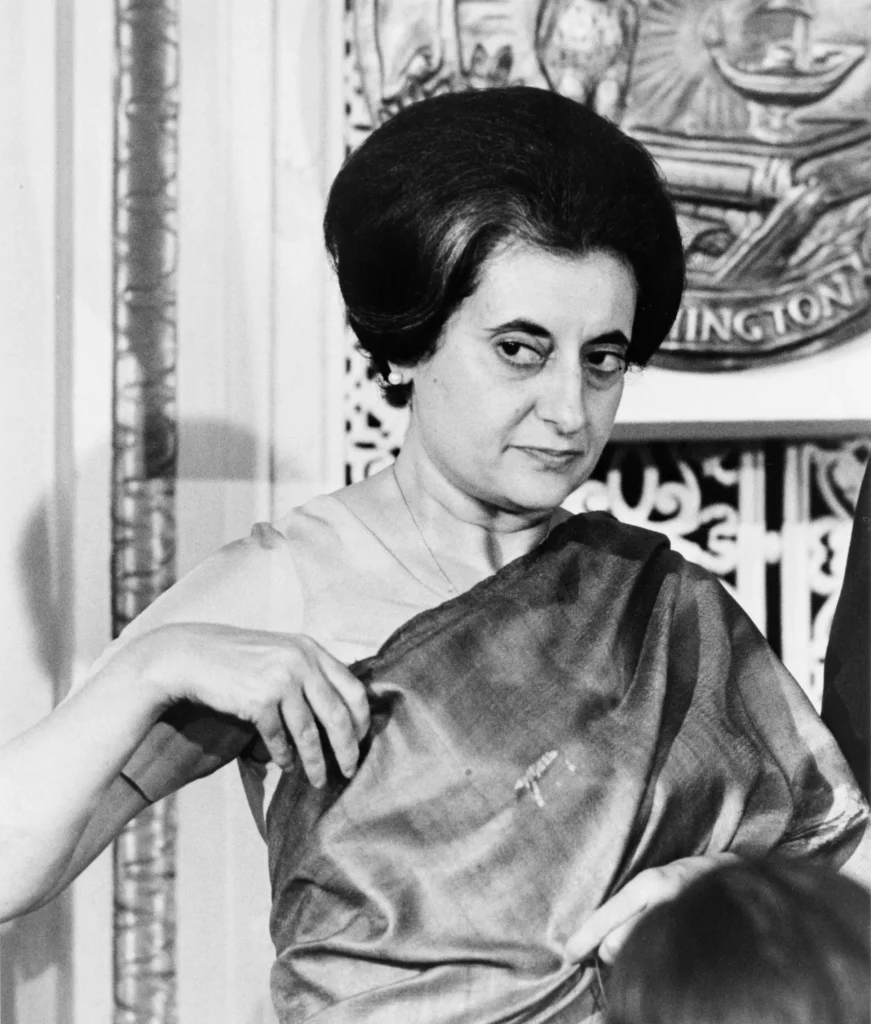
credit:wikipedia
Despite these challenges, Indira Gandhi grew strong, resilient, and self-reliant. Her determination to overcome personal struggles prepared her for the tough world of Indian politics, where she would later emerge as the Iron Lady of India.
Turning Point:
Indira Gandhi’s life was a blend of personal struggles, bold political moves, and defining moments that changed the course of Indian history. Here’s a timeline of her turning points from birth to death:
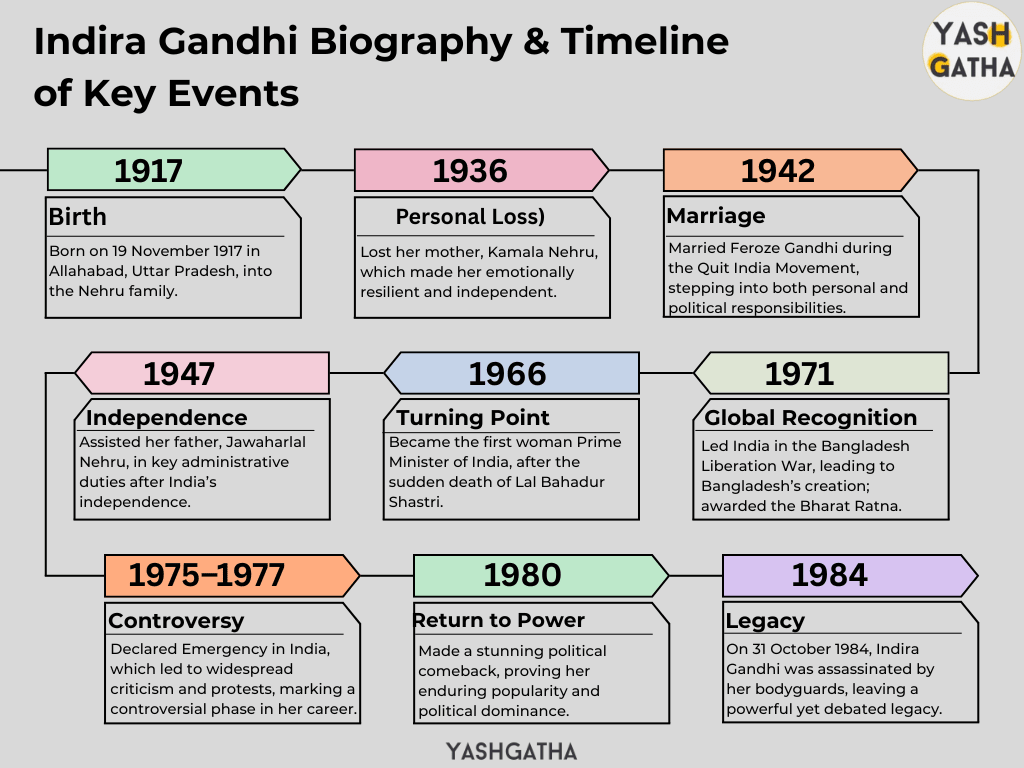
The Recognition & Award :
Indira Gandhi’s leadership reached its peak during the 1971 Bangladesh Liberation War, when India played a decisive role in supporting East Pakistan (now Bangladesh) against West Pakistan. Her bold decision to provide military, diplomatic, and humanitarian support not only led to the creation of Bangladesh but also established India as a rising power in global politics. For her fearless leadership and extraordinary contribution to the nation, Indira Gandhi was honored with the Bharat Ratna in 1971, India’s highest civilian award. This recognition marked her as a leader who had not only transformed India’s political landscape but also reshaped South Asia’s history.
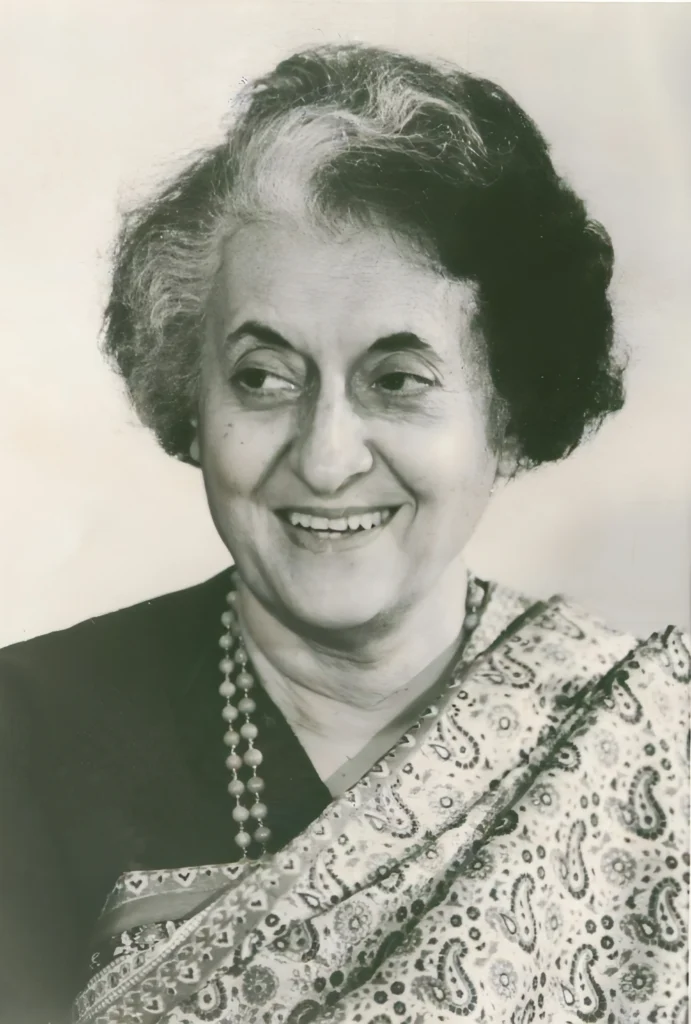
credit:wikipedia
Her Bharat Ratna moment was more than an award—it was a symbol of:
- India’s military and political victory in 1971
- Recognition of her global stature as one of the most powerful women leaders of her time
- A turning point that made her the “Iron Lady of India” in the eyes of the world
What Changed After the Awards :
Receiving the Bharat Ratna in 1971 was more than just an honor for Indira Gandhi—it marked a pivotal moment in her political journey and India’s history. After the award, several significant changes occurred in her life and leadership style:
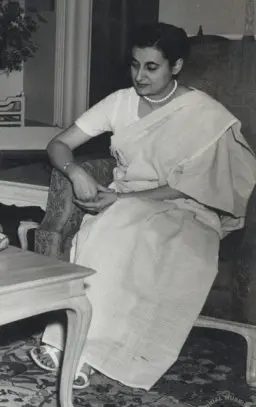
credit:wikipedia
- Global Recognition: Indira Gandhi’s stature as a world leader grew, making her one of the most powerful women in international politics.
- Political Strength: Her popularity soared in India, consolidating her power and enabling her to implement major policies with authority.
- Bold Decisions: Post-award, she took critical and sometimes controversial decisions, including the declaration of Emergency in 1975–1977, showing her firm grip over the political landscape.
- Nation Building: She focused on initiatives to strengthen India’s economy, defense, and international relations, reshaping India’s position in global politics.
- Public Image: The award reinforced her image as the Iron Lady of India, admired for her courage, resilience, and unwavering leadership.
- Legacy Cemented: The recognition gave her legacy a permanent place in history, inspiring generations of women leaders in India and across the world.
Infographic Idea:
- Before Award: Rising politician, first term as PM, regional influence
- After Award: Global leader, national icon, decisive policymaker
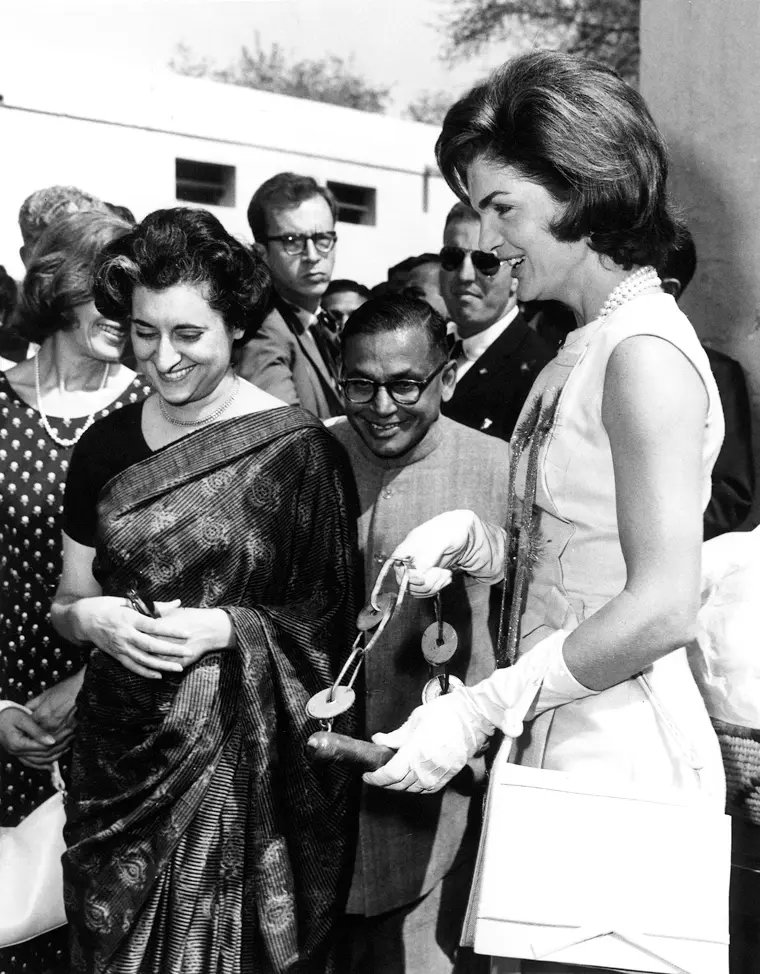
Jacqueline Kennedy and Indira Gandhi
credit:wikipedia
Yashgatha Takeways :
Indira Gandhi’s life was filled with triumphs, challenges, and bold decisions that shaped India’s destiny. Her journey offers timeless lessons for leaders, students, and anyone striving to make an impact:
